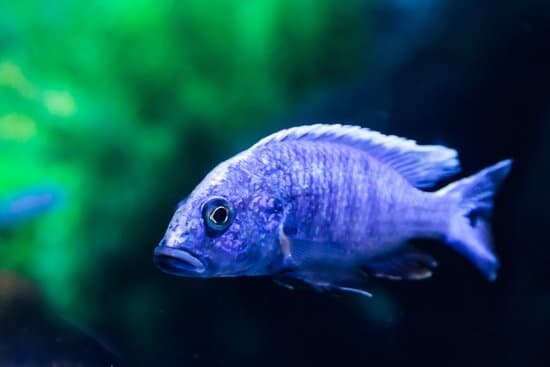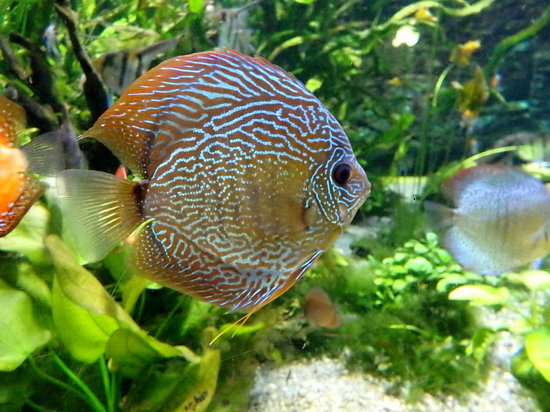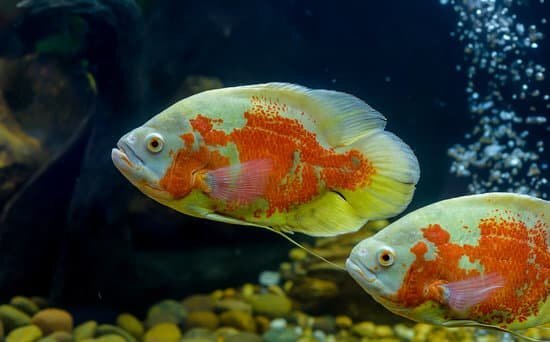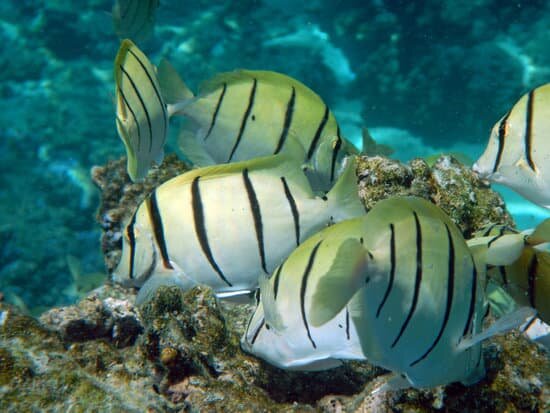[ad_1]
Fishkeeping is a pretty popular hobby all over the world. Most of the fish owners love to keep cichlids. Aquarists prefer Cichlids over any other fish species because of their vibrant bodies and their interesting behavior.
There are some types of Cichlids that can only co-exist with the species of cichlids that come from a similar region. Like, the African Cichlids can only co-exist with the African Cichlids, or the South American Cichlids can only share the tank with South American Cichlids.
However, there are also some types of cichlids who would not mind sharing the tank with other species of cichlids. For instance, the Dwarf Cichlids can share the tank with other cichlids as well.
Cichlids are pretty complicated fish; some types of cichlids have similar care requirements but cannot share the same tank. Some cannot tolerate other species of cichlids, while some can.
Before you plan on doing so, you need to do your part of the research. Here, in this article, we are going to discuss the types of cichlids that can live together.
Can You Keep Different Types of Cichlids together?
What are the types of cichlids that can live together? Let’s take a look –
#1 Angelfish [Pterophyllum]
- Level of Care: Medium
- Size: 6”
- Lifespan: 10 years
- pH range: 6.8 – 7.8
- Temperature: 78 degrees – 84 degrees Fahrenheit
- Tank size: 20 gallons
- Behavior: bit aggressive
- Also known as : Freshwater Angelfish
If you have ever been to a fish store, the first fish species you will notice is the Angelfish. It is among the most popular choices that hobbyists make when it comes to fish keeping.
These fish have growing popularity, have a selective breeding process, and the outcomes are truly amazing.
The angelfish is available in different and vibrant patterns.
This species of cichlids tend to have a complex social group. You cannot keep a single angelfish in a tank, but they can live peacefully if they have six of them.
If you wish to provide your angels with some fellow tank mates, well, it is possible. You need to make sure that its tank mates are not too small in size as they may eat their own tank mates. Furthermore, angelfish do not like to be around fish species that are way too active.
#2 Electric Blue Cichlid [Sciaenochromis Fryeri]

- Level of Care: Medium
- Size: 7.9”
- Lifespan: 8 – 10 years
- pH range: 7.7 – 8.6
- Temperature: 72 degrees – 82 degrees Fahrenheit
- Tank size: 70+ gallons
- Behavior: bit aggressive
- Also known as: Electric Blue Haps
The Electric Blue Cichlid is also known as Electric Blue Haps.
The male fish of this Malawi species look astounding and can catch one’s eye without any effort. If you are interested in keeping a male of this species, you have to provide him with three females. This will help them to cut out the stress during the breeding season.
#3 Discus [Symphysodon]

- Level of care : pretty high and hard
- Size: 6”
- Lifespan: 10 years
- pH range : 6.0 – 7.0
- Temperature: 82 degrees – 86 degrees Fahrenheit
- Tank size: 40 gallons or more for each pair
- Behavior: peaceful and peace-loving
- Also Known As : Discus fish
The Discus fish is another one from the holy grails of the fish-keeping dimension. Discus is often termed as the King of all cichlids as it has higher requirements, and it is extremely difficult to take care of them.
#4 Oscar [Astronotus Ocellatus]

- Level of care : Medium
- Size: 15”
- Lifespan: 10 – 20 years
- pH range : 6.0 – 7.5
- Temperature: 77 degrees – 80 degrees Fahrenheit
- Tank size: 120 gallons or more for each pair
- Behavior: Aggressive
- Also known as : Red Cichlid, Velvet Cichlid or sometimes called Marble Cichlid
If you’ve been into the fishkeeping business for a long time, then you probably have thought of bringing in some Oscars, or you might have them already.
Oscars are known for their size and personality. The patterns on a fully grown Oscar look incredible.
If you are thinking of bringing in an Oscar, you have to research well because there are zillions of misconceptions about the Oscars.
Oscars require an excellent water filtration system. If you haven’t had Oscars before, let me tell you something. You probably have heard about the tank interior designer fish; yes, Oscars are the one.
So, if you wish to have a great interior in your tank with beautiful Oscars, well, you need to make peace with the fact that they will design the tank in their own way, like moving rocks from one place to another, moving the woods. And if you have live plants or any props, chances are they are likely to get uprooted.
#5 Convict [Amatitlania Nigrofasciata]

- Level of Care : Very Easy
- Size: 4” – 5”
- Lifespan: 8 to 10 years
- pH range: 6.6 – 7.8
- Temperature: 79 degrees – 84 degrees Fahrenheit
- Tank size: 20 gallons or more for a breeding pair.
- Behavior: Aggressive
- Also known as : Zebra Cichlid
Belongs from Central America, this species of cichlid is not fond of socializing. As a result, it does not go well with the fish of other species, and at times this fish can be pretty violent.
Besides their aggressive temperament, this species of fish is perfect for freshers as these fish are pretty easy to keep and maintain.
Always research the fish that you want to buy. If you buy any fish that loves to get violent or a convict, you would not like the consequences.
Best Cichlids Types to Keep Together
Cichlids are one of the best fish species to keep in an aquarium. Cichlids are known for their temperament and colorful body types.
But, not all the cichlid types can live together; there are countable species of cichlids that can cohabitate.
Here are some of the best Cichlids types that can cohabitate –
African Cichlids
African cichlids (the Mbunas) are pretty aggressive in nature but can live to cohabitate with other cichlid types.
Their aggression is less likely to cause a problem if you have a larger fish in the tank-like Peacocks and Haps. The Mbunas, Peacocks, and Haps can live peacefully in one tank only if you are able to handle their temperament.
These fish species have a natural balance and understanding between them that help them live together. However, these are not ideal matches for one another.
- Level of Care : Medium
- Size : 3” – 8”
- Lifespan: 10 years
- pH range: 7.5 – 8.4
- Temperature: 77 degrees – 84 degrees Fahrenheit
- Tank size: 30 gallons or more
- Behavior: A bit aggressive
- Also known as Mbunas
Discus
If you are into fishkeeping, then you probably have heard of Discus. These are one most desired fish species because of their alluring body colors and the brightest fish that you can have in your aquarium.
Discus tends to be very peaceful in nature, and these are most likely to back off and runway away from any cichlid that is trying to get into a fight.
During their spawning times, these can be very dangerous to mess with and can be aggressive towards their very own species.
Due to their peaceful nature, these fish can easily cohabitate with Dwarfs and the Angels.
- Level of Care: pretty high and hard
- Size: 6”
- Lifespan: 10 years
- pH range : 6.0 – 7.0
- Temperature: 82 degrees – 86 degrees Fahrenheit
- Tank size: 40 gallons or more for each pair
- Behavior: peaceful and peace-loving
- Also known as : Discus fish
Dwarf Cichlids
If you are looking for some best cichlids that can live together, then the Pelvicachromis Pulcher or Dwarf Cichlids are one of the best choices you can make.
These fish can easily co-exist due to their teeny-tiny size, and they are not at all aggressive. And due to their size, they cannot be a potential threat to any other fish in the tank.
These fish can happily live together with Discus, Angels, and the South American Cichlids.
- Level of Care : Medium
- Size: 6”
- Lifespan: 5 – 10 years
- pH range: 5 – 7
- Temperature: 74 degrees – 84 degrees Fahrenheit
- Tank size: 15 gallons
- Behavior: Peaceful
Angelfish
Angelfish can happily coexist with any fish that are not aggressive. However, you should not put them in a tank that contains too many active fish. Angelfish are peaceful, and they may not be able to handle all that action well.
- Level of Care : Medium
- Size: 6”
- Lifespan: 10 years
- pH range: 6.8 – 7.8
- Temperature: 78 degrees – 84 degrees Fahrenheit
- Tank size: 20 gallons
- Behavior: bit aggressive
- Also known as: Freshwater Angelfish
What Kind of Fish Can You Put With Cichlids
Cichlids are very much capable of co-existing, and there are many fish species that would love to co-exist with the cichlids.
The species that normally stay with cichlids are Clown Loaches, Corydoras Catfish, and species of Tetras.
When it comes to finding tank mates for your cichlids or any fish is a great discussion.
So here are some of the best tank mates for your cichlids.
#1 Giant Danio [Devario Aequipinnatus]
- Level of Care: Very Easy
- Size: 4”
- Lifespan: 5 to 7 years
- pH range : 6.5 – 7.0
- Temperature: 64 degrees – 74 degrees Fahrenheit
- Tank size: 30 gallons or more
- Behavior: peace-loving and peaceful
If you are looking for an absolutely stunning tank mate for your cichlids, undoubtedly, the Great Danio is the one. It is a bright fish with stunning color hues.
Its colors range from a silver shade combined with golden patches and a cobalt blue top. This fish is a natural eye-catcher. All the African species of cichlids can happily coexist with the Great Danio just because the Danio is not a picky fish.
However, the Great Danio needs a group of six other Danios to stay!
#2 African Red-Eyed Tetra [Arnoldichthys Spilopterus]
- Level of Care : Medium
- Size: 3.9”
- Lifespan: 5 years
- pH range : 5.5 – 6.5
- Temperature: 72 degrees – 79 degrees Fahrenheit
- Tank size: 50 gallons or more
- Behavior: Peace Loving and Peaceful
- Also known as : NigerTetra
The species of cichlids that come from Africa go pretty well with the Red-Eyed Tetras. Compared to the cichlids, this species of tetras gets bigger in size.
Henceforth, this fish requires a bigger tank to play and move. Interestingly, these species have the exact same requirement as African cichlids.
Another fact is that these species of tetras are not picky at all. They will happily eat the food that you give your cichlids.
#3 Leopard Bushfish [Ctenopoma Acutirostre]
- Level of Care : Medium
- Size: 7”
- Lifespan: 5 to 10 years
- pH range : 6.0 – 7.5
- Temperature: 79 degrees – 84 degrees Fahrenheit
- Tank size: 50 gallons or more
- Behavior: Semi-Aggressive
- Also known as : Spotted Ctenopoma, Spotted Climbing Perch, Leopard Ctenopoma, Spotted Bushfish
The Leopard Bushfish is one of the best choices for aquariums. Why? This is because of their habits and excellent appearance.
If you look at their bodies, you will get some excellent patches and splotches that resemble a member of the cat family that it has got its name. If you set the lights on them, you can never look away from your aquarium.
Also, I should also add that the Leopard Bushfish and the African cichlids have the same level of aggression. This is one reason why these two fish types can be great buddies.
However, the Leopard Bushfish tend to be very picky when it comes to food. They need their own food, especially the one they are accustomed to.
#4 Firemouth Cichlid [Thorichthys Meeki]
- Level of Care : Easy
- Size: 6”
- Lifespan: 10 years
- pH range : 6.5 – 8.0
- Temperature: 75 degrees – 86 degrees Fahrenheit
- Tank size: 30 gallons or more
- Behavior: Semi-Aggressive
- Also Known As : Red-Breasted cichlid, Firemouth, and Mojarra Boca de Fuego
Over the years, the Firemouth Cichlid has been a great choice for many aquarists. However, its popularity is seeing a downtrend now, but once it has received a lot of people, especially from beginners.
The Firemouth is quite similar to the Convict Cichlids. The Firemouth is a pretty hardy fish and breeds pretty quickly. However, compared to the Convict, the Firemouth is a bit slower when spawning. But, this too has a positive side as slower spawning will not fill the tank with younglings.
When it comes to tank mates, the Firemouth can happily share the tank with your Central American Cichlids. But, you will make a mistake if you put them in a tank with non-active and non-aggressive fish, as the Firemouth can be very aggressive during their spawning period.
Always put them in a tank where they can get tough competition. Try putting them with cichlids of similar size, as they can easily hold their ground.
Do not put them with passive fish, and you will not like the consequences.
#5 Kribensis Cichlid [Pelvicachromis Pulcher]
- Level of Care : Easy
- Size: 4”
- Lifespan: 5 years
- pH range : 6.0 – 8.0
- Temperature: 72 degrees – 82 degrees Fahrenheit
- Tank size: 20 to 30 gallons or more
- Behavior: peace-loving and peaceful
- Also Known As : Rainbow Cichlid and Rainbow Krib
Are you a beginner in this business, and do you want to start off with cichlids? We recommend that you should start with this Rainbow Krib. Why?
Here is why –
First and foremost, the fish of this species have excellent shades on their bodies and are extremely famous for their name, i.e., the Rainbow Krib.
Second, this species of fish is very peaceful and is less likely to get into a fight. Also, these are undemanding and work well when they stay in small groups. These fish spend the majority of their time exploring the aquarium’s decorations and swimming.
There is one thing that you should consider, and you cannot put the Kribs with aggressive fishes. If you put them in a tank with aggressive fish, they are most likely to end up hiding here and there in the tank.
But, if you put them with some non-aggressive fish, the Kribs will enjoy the power and bully other fish during the spawning period.
Conclusion
The majority of the aquarists prefer to keep cichlids in their tanks because of their unique colors and personalities.
Cichlids are pretty complicated, so you have to dedicate the time to study their needs, care, food choices, and all, as we have already mentioned that not all types of cichlids are comfortable with each other. Some cichlids would love to co-exist, while others would pick a fight instead.
Before you actually end up buying cichlids for your tank, we advise you to read and gather information as much as possible. Read and interact with other aquarists to get a better perspective. Also, here in this article, we have discussed the species that are compatible with other species, but that’s not all.
Creating harmony among all your fish species is very important.
[ad_2]
Source link
